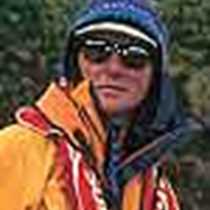Isles of Staffa, Iona and Mull, Scotland
Good morning, and welcome to Scotland! was the call Tom gave us over the PA system.
Today Endeavour arrived among the Inner Hebrides Islands of western Scotland, and we anchored off of the Isle of Staffa. This small, flower-covered island is not only beautiful, but famous for many reasons, one being that it is composed of dramatic columnar basalt rock structures that jut out of the sea forming the most amazing landscapes. Several caves are found along the coast as well, the most scenic and well-known being Fingal’s Cave, which was so striking and unique that it was the inspiration for Felix Mendelssohn’s classic overture, The Hebrides composed in 1829. Staffa is also known and loved for the comical Atlantic Puffin (pictured here) as several hundred pairs make their home along the tops of the cliffs, where they burrow several feet into the soil to lay and incubate their one egg, and raise their one little chick called a “puffling” if you can believe that! We were lucky enough to arrive at the cliff edge just as several puffins left the water and were whirling about, circling above the sea, and landing in the grass right in front of us. We watched their antics; courting, clicking their bills together, gathering nesting material, digging burrows, squawking at each other with wide open, brightly colored beaks, and all in all amusing us to no end. It was hard to tear ourselves away from their strutting about, but we managed to make our way around the island’s edge to see the stunning wildflowers and look for other land and shorebirds.
Later in the afternoon, Endeavour repositioned to the island of Iona where we went ashore by Zodiac to visit the picturesque ruins of a nunnery, the famous Iona Abbey and the gravesites of several Norse kings, among them Duncan and Macbeth. We had ample time to stroll around the island, shop for local crafts and woolen knitwear, or look for the elusive corn crake, a small rail that makes quite a racket, yet rarely shows itself. Today was not only a day for history and geology, but also a fortunate day for bird watching, for not only did we spend time with our little friends the swashbuckling puffins, but we even caught a glimpse of the corn crake! What a day!
Good morning, and welcome to Scotland! was the call Tom gave us over the PA system.
Today Endeavour arrived among the Inner Hebrides Islands of western Scotland, and we anchored off of the Isle of Staffa. This small, flower-covered island is not only beautiful, but famous for many reasons, one being that it is composed of dramatic columnar basalt rock structures that jut out of the sea forming the most amazing landscapes. Several caves are found along the coast as well, the most scenic and well-known being Fingal’s Cave, which was so striking and unique that it was the inspiration for Felix Mendelssohn’s classic overture, The Hebrides composed in 1829. Staffa is also known and loved for the comical Atlantic Puffin (pictured here) as several hundred pairs make their home along the tops of the cliffs, where they burrow several feet into the soil to lay and incubate their one egg, and raise their one little chick called a “puffling” if you can believe that! We were lucky enough to arrive at the cliff edge just as several puffins left the water and were whirling about, circling above the sea, and landing in the grass right in front of us. We watched their antics; courting, clicking their bills together, gathering nesting material, digging burrows, squawking at each other with wide open, brightly colored beaks, and all in all amusing us to no end. It was hard to tear ourselves away from their strutting about, but we managed to make our way around the island’s edge to see the stunning wildflowers and look for other land and shorebirds.
Later in the afternoon, Endeavour repositioned to the island of Iona where we went ashore by Zodiac to visit the picturesque ruins of a nunnery, the famous Iona Abbey and the gravesites of several Norse kings, among them Duncan and Macbeth. We had ample time to stroll around the island, shop for local crafts and woolen knitwear, or look for the elusive corn crake, a small rail that makes quite a racket, yet rarely shows itself. Today was not only a day for history and geology, but also a fortunate day for bird watching, for not only did we spend time with our little friends the swashbuckling puffins, but we even caught a glimpse of the corn crake! What a day!




